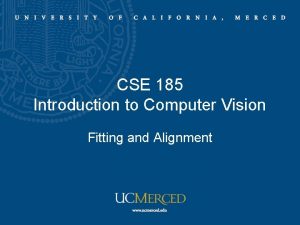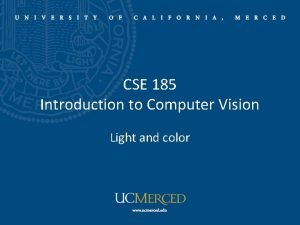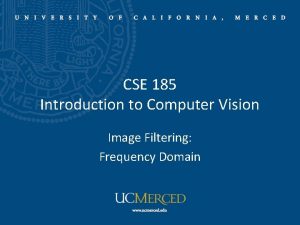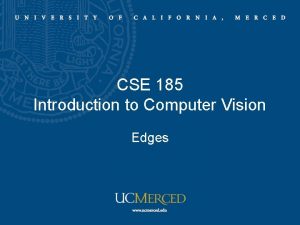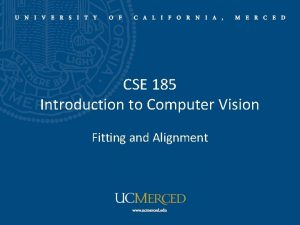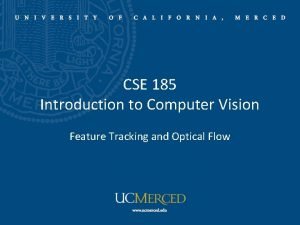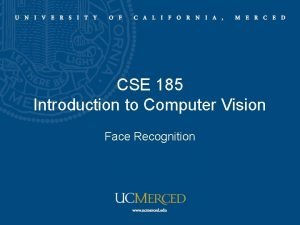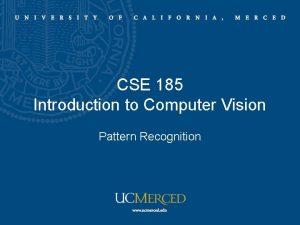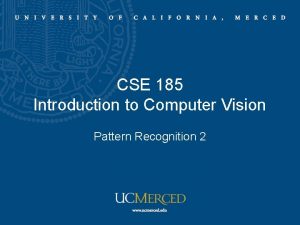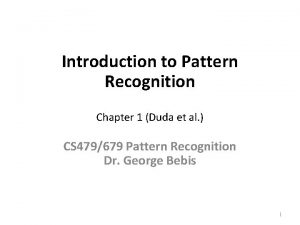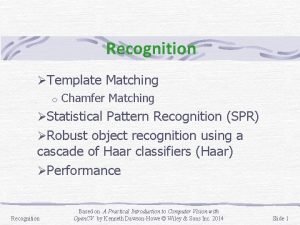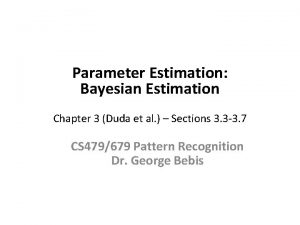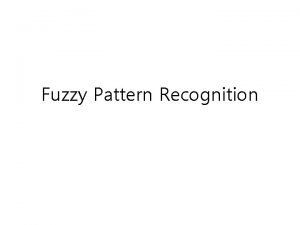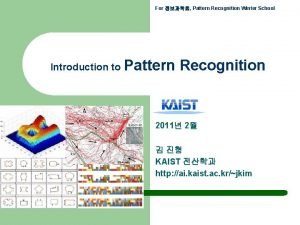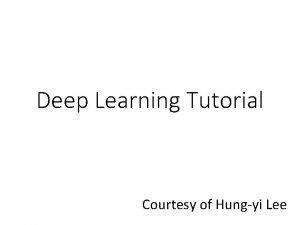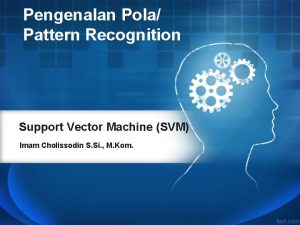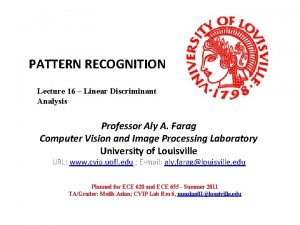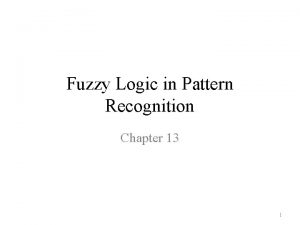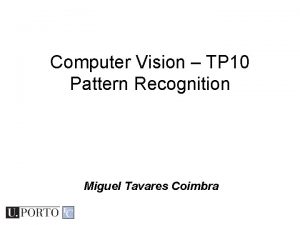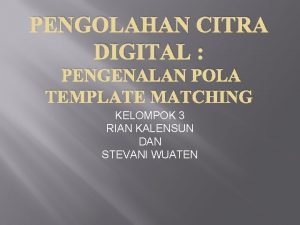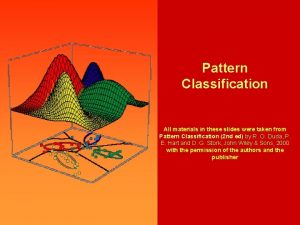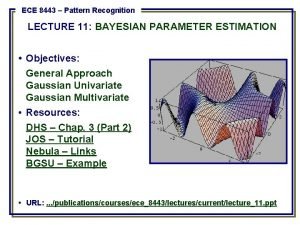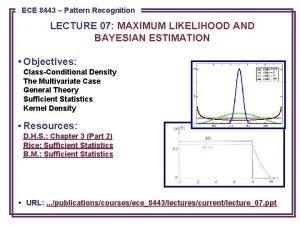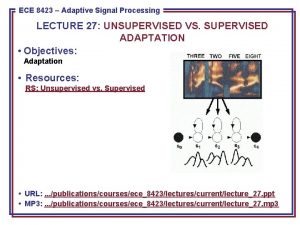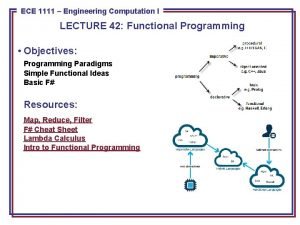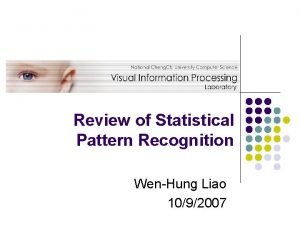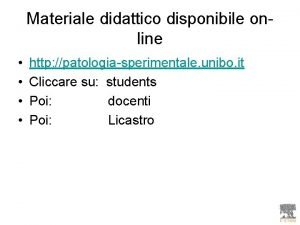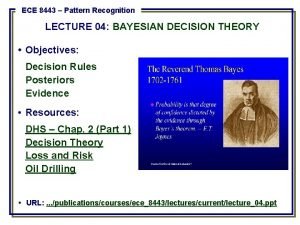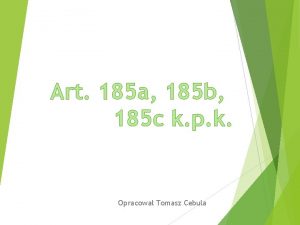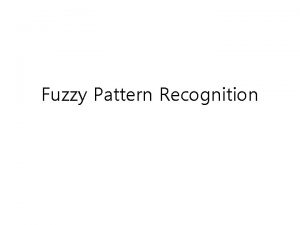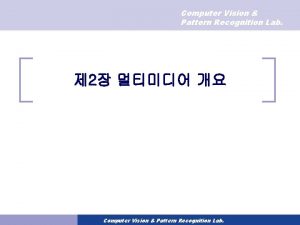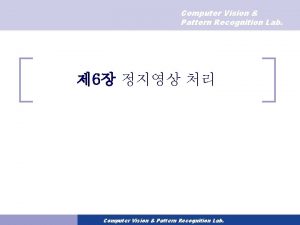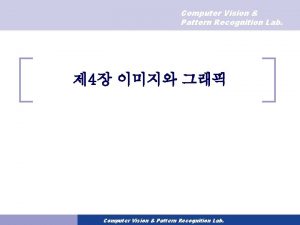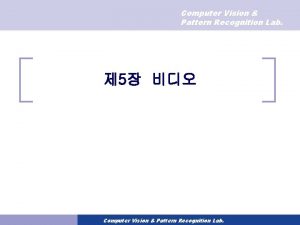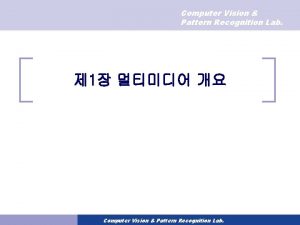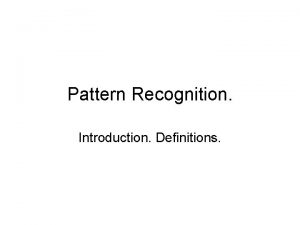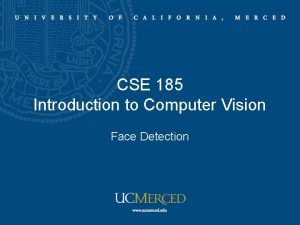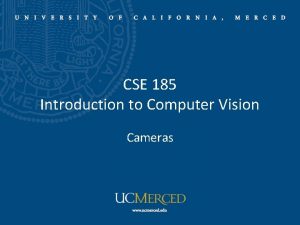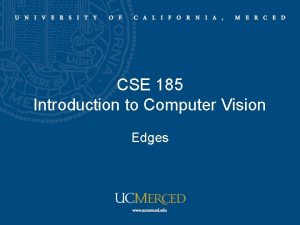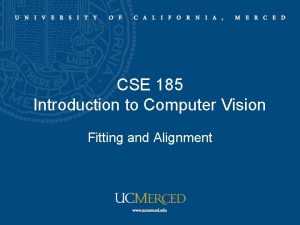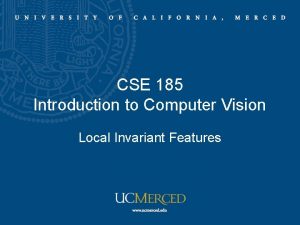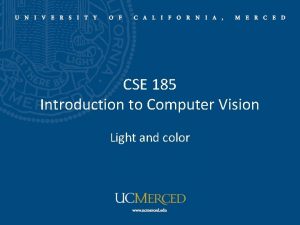CSE 185 Introduction to Computer Vision Pattern Recognition


































- Slides: 34

CSE 185 Introduction to Computer Vision Pattern Recognition 2

Agglomerative clustering

Agglomerative clustering

Agglomerative clustering

Agglomerative clustering

Agglomerative clustering

Agglomerative clustering How to define cluster similarity? - Average distance between points, maximum distance, minimum distance - Distance between means or medoids How many clusters? distance - Clustering creates a dendrogram (a tree) - Threshold based on max number of clusters or based on distance between merges

Agglomerative Clustering Good • Simple to implement, widespread application • Clusters have adaptive shapes • Provides a hierarchy of clusters Bad • May have imbalanced clusters • Still have to choose number of clusters or threshold • Need to use a good metric to get a meaningful hierarchy

Mean shift segmentation D. Comaniciu and P. Meer, Mean Shift: A Robust Approach toward Feature Space Analysis, PAMI 2002. • Versatile technique for clustering-based segmentation

Mean shift algorithm • Try to find modes of this non-parametric density Trajectories of mean shift procedure 2 D (first 2 components) dataset of 110, 400 points in the LUV space Mean shift procedure (7 clusters)

Kernel density estimation function Gaussian kernel

Mean shift Region of interest Center of mass Mean Shift vector

Mean shift Region of interest Center of mass Mean Shift vector

Mean shift Region of interest Center of mass Mean Shift vector

Mean shift Region of interest Center of mass Mean Shift vector

Mean shift Region of interest Center of mass Mean Shift vector

Mean shift Region of interest Center of mass Mean Shift vector

Mean shift Region of interest Center of mass

Computing the mean shift Simple Mean Shift procedure: • Compute mean shift vector • Translate the Kernel window by m(x)

Attraction basin • Attraction basin: the region for which all trajectories lead to the same mode • Cluster: all data points in the attraction basin of a mode

Attraction basin

Mean shift clustering • The mean shift algorithm seeks modes of the given set of points 1. Choose kernel and bandwidth 2. For each point: a) b) c) d) Center a window on that point Compute the mean of the data in the search window Center the search window at the new mean location Repeat (b, c) until convergence 3. Assign points that lead to nearby modes to the same cluster

Segmentation by mean shift • • • Compute features for each pixel (color, gradients, texture, etc) Set kernel size for features Kf and position Ks Initialize windows at individual pixel locations Perform mean shift for each window until convergence Merge windows that are within width of Kf and Ks

Mean shift segmentation

http: //www. caip. rutgers. edu/~comanici/MSPAMI/ms. Pami. Results. html

Mean shift pros and cons • Pros – Good general-practice segmentation – Flexible in number and shape of regions – Robust to outliers • Cons – Have to choose kernel size in advance – Not suitable for high-dimensional features • When to use it – Oversegmentatoin – Multiple segmentations – Tracking, clustering, filtering applications

Spectral clustering • Group points based on links in a graph A B

Cuts in a graph A B Normalized Cut • a cut penalizes large segments • fix by normalizing for size of segments • volume(A) = sum of costs of all edges that touch A

Normalized cuts

Which algorithm to use? • Quantization/Summarization: K-means – Aims to preserve variance of original data – Can easily assign new point to a cluster Quantization for computing histograms Summary of 20, 000 photos of Rome using “greedy k-means” http: //grail. cs. washington. edu/projects/canonview/

Which algorithm to use? • Image segmentation: agglomerative clustering – More flexible with distance measures (e. g. , can be based on boundary prediction) – Adapts better to specific data – Hierarchy can be useful http: //www. cs. berkeley. edu/~arbelaez/UCM. html

Things to remember • K-means useful for summarization, building dictionaries of patches, general clustering • Agglomerative clustering useful for segmentation, general clustering • Spectral clustering useful for determining relevance, summarization, segmentation

Clustering Key algorithm • K-means

 Cse 185
Cse 185 Cse 185
Cse 185 Cse 185
Cse 185 Fgf cse
Fgf cse Cse 185
Cse 185 Aperture problem computer vision
Aperture problem computer vision Cse 185
Cse 185 Cse 185
Cse 185 Cse 185
Cse 185 Introduction to pattern recognition
Introduction to pattern recognition Human vision vs computer vision
Human vision vs computer vision Chamfer matching
Chamfer matching Bayesian parameter estimation in pattern recognition
Bayesian parameter estimation in pattern recognition Pattern recognition
Pattern recognition Design cycle of pattern recognition
Design cycle of pattern recognition Pattern recognition
Pattern recognition Pattern recognition lab
Pattern recognition lab Pattern recognition clinical reasoning
Pattern recognition clinical reasoning Contoh pattern recognition
Contoh pattern recognition Discriminant function in pattern recognition
Discriminant function in pattern recognition Fuzzy logic in pattern recognition
Fuzzy logic in pattern recognition Pattern recognition
Pattern recognition Pattern recognition horse
Pattern recognition horse Direct wax pattern
Direct wax pattern Pengertian pola digital
Pengertian pola digital Pattern recognition slides
Pattern recognition slides Picture recognition
Picture recognition Pattern recognition
Pattern recognition Bayesian parameter estimation in pattern recognition
Bayesian parameter estimation in pattern recognition Pattern recognition
Pattern recognition Pattern recognition
Pattern recognition Pattern recognition
Pattern recognition Statistical pattern recognition a review
Statistical pattern recognition a review Patologia sperimentale unibo
Patologia sperimentale unibo Bayesian decision theory in pattern recognition
Bayesian decision theory in pattern recognition
